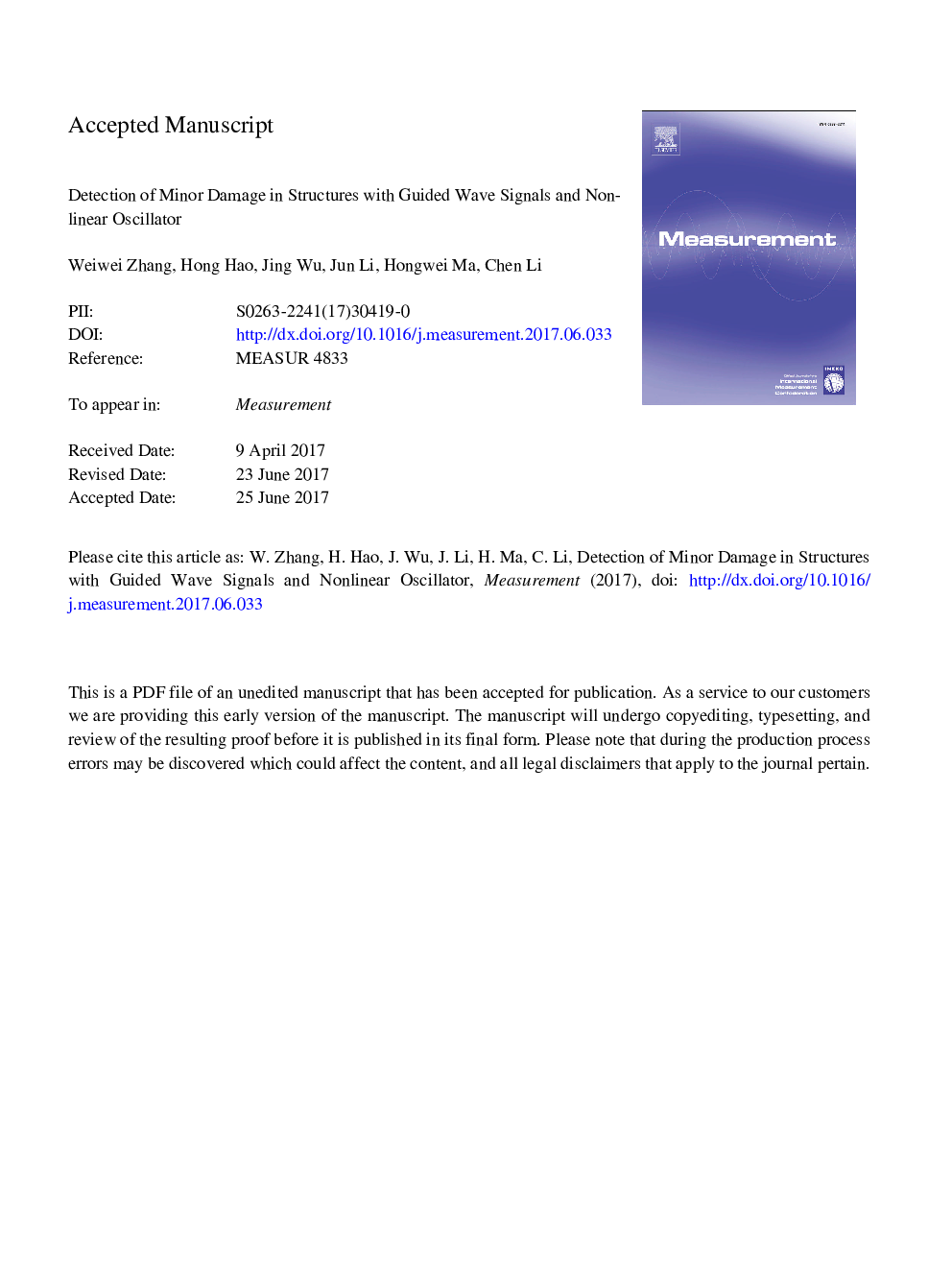| Article ID | Journal | Published Year | Pages | File Type |
|---|---|---|---|---|
| 7121805 | Measurement | 2018 | 45 Pages |
Abstract
Ultrasonic Guided Wave (UGW)-based method is a very promising nondestructive testing (NDT) technique for detecting defects in elongated structures, such as pipelines, railway tracks and elongated bars. Minor damage in structures only introduce weak reflections of UGW, which limits the detection range of the method and make it ineffective to use guided wave signals for reliable detections of minor structural damages. In this paper, a novel technique based on analyzing the responses of a nonlinear oscillator with the recorded UGW signal as an added input is proposed for the detection of minor structural damage. The theoretical background is that tiny differences in the input function of a nonlinear system can lead to large differences in the solution of the system. To detect the minor damage, the weak UGW signal is treated as the driving force of the nonlinear system. Minor defect in structures can be detected by analyzing the responses of the nonlinear oscillator. To verify the feasibility of the proposed approach, experimental studies on pipe specimens with several damage scenarios are carried out. Lyapunov exponents are used to identify the echo signal of the weak UGW. For locating the minor defect, Lyapunov exponents with a moving window are used to determine the arriving time of the echo signal. The results demonstrate the effectiveness of the proposed approach for detecting the minor damage in pipe structures even when the noise effect is significant. The proposed approach increases the sensitivity and applicability of UGW-based methods to detect the minor damage in structures with weak guided wave signals.
Related Topics
Physical Sciences and Engineering
Engineering
Control and Systems Engineering
Authors
Weiwei Zhang, Hong Hao, Jing Wu, Jun Li, Hongwei Ma, Chen Li,
